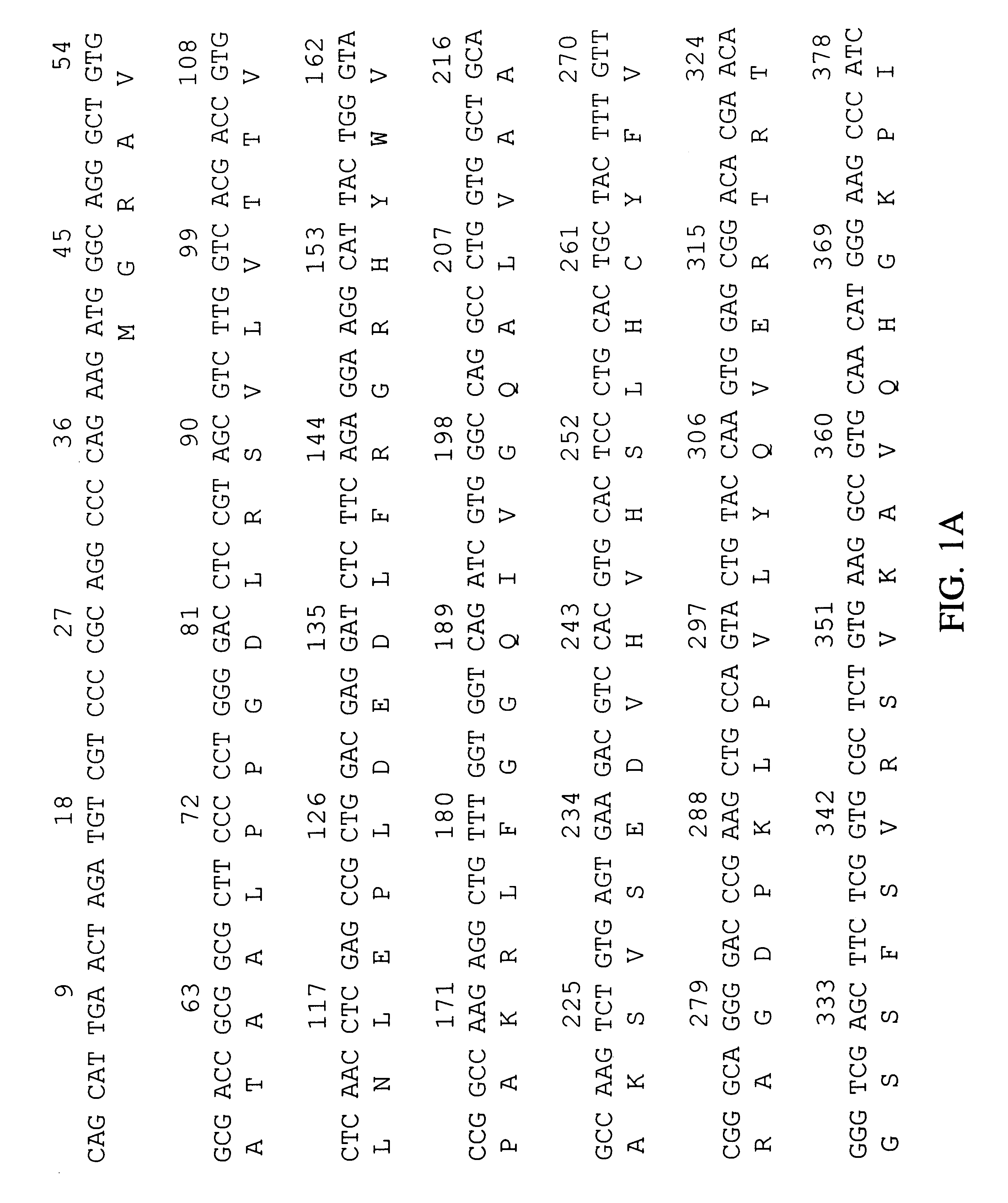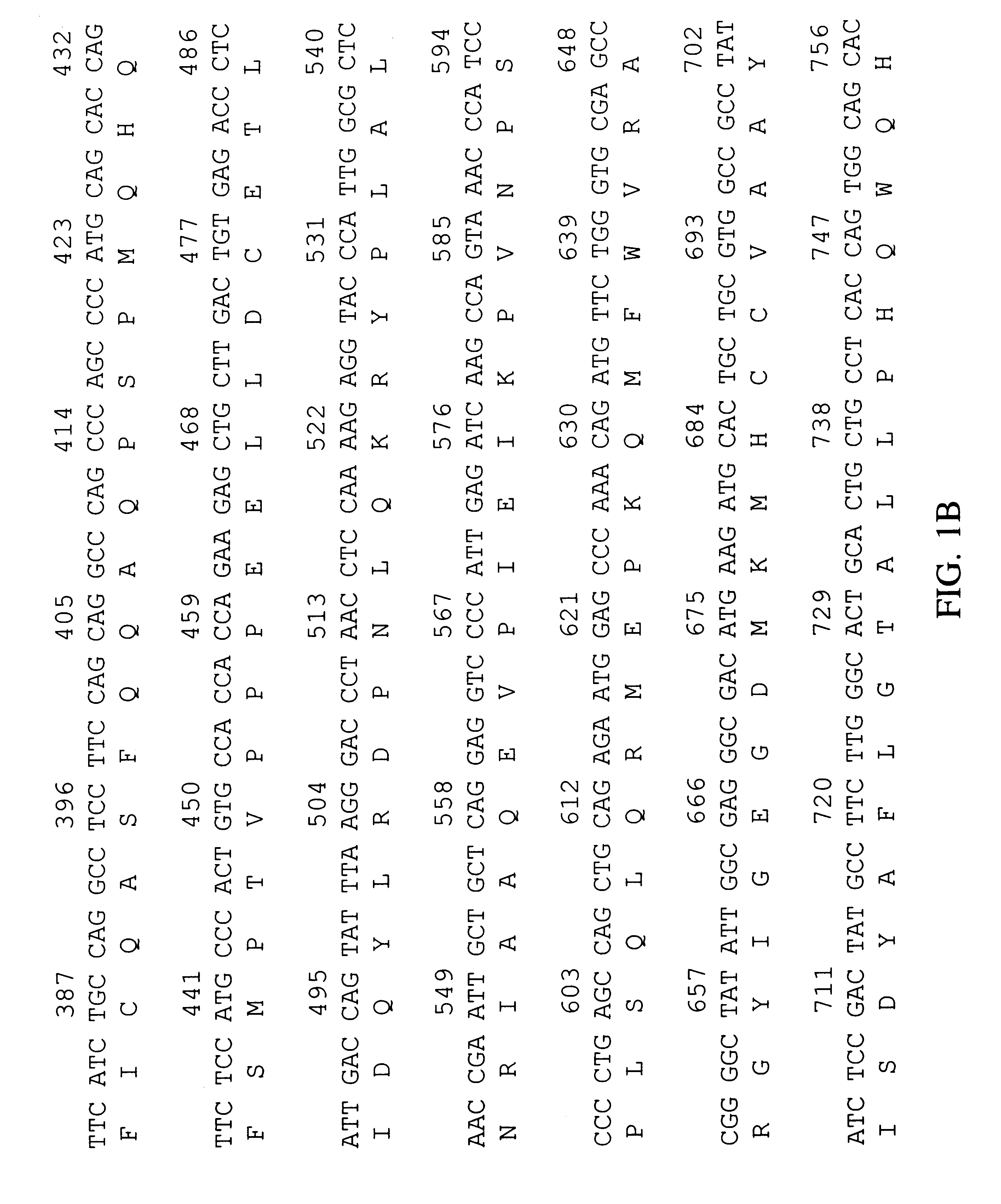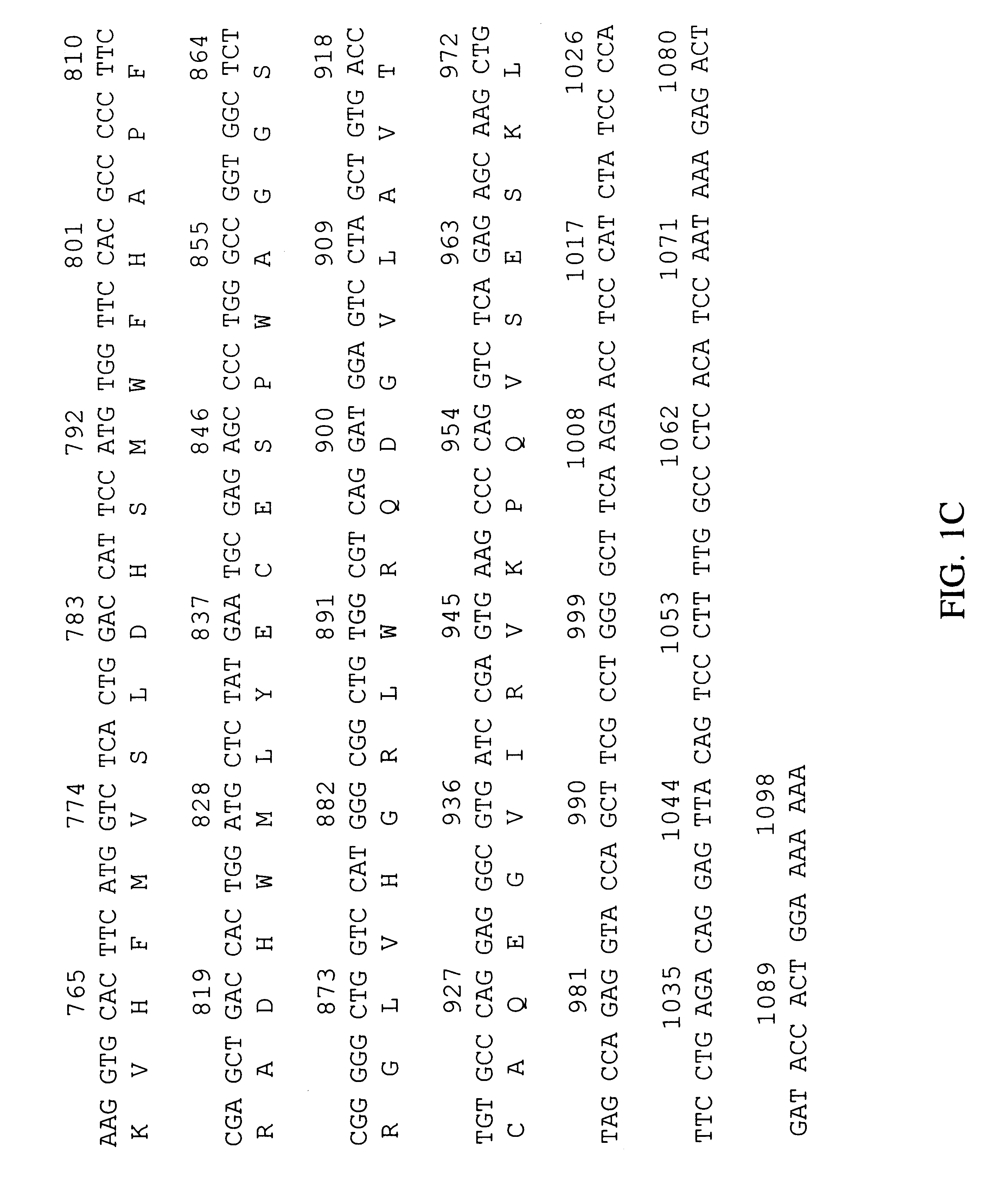Human peroxisomal thioesterase
a technology of peroxisomal fatty acid and thioesterase, which is applied in the field of human peroxisomal thioesterase, can solve the problems of difficult clinical distinction between patients with a disorder of peroxisome assembly and those with a defect in peroxisomal fatty acid metabolic enzyme, and achieve the effect of preventing the development or further progression of cancer
- Summary
- Abstract
- Description
- Claims
- Application Information
AI Technical Summary
Benefits of technology
Problems solved by technology
Method used
Image
Examples
examples
I BRAINOT09 cDNA Library Construction
The BRAINOT09 cDNA library was constructed from microscopically normal fetal brain tissue obtained from a Caucasian male (specimen #RU95-10-0700; International Institute for the Advancement of Medicine, Exton, Pa.) who died after 23 weeks' gestation following premature birth.
The frozen tissue was homogenized and lysed using a Brinkmann POLYTRON homogenizer PT-3000 (Brinkmann Instruments, Westbury, N.Y.) in guanidinium isothiocyanate solution. The lysate was extracted once with acid phenol at pH 4.7 per Stratagene's RNA isolation protocol (Stratagene, Inc., San Diego, Calif.). The RNA was extracted once with an equal volume of acid phenol, reprecipitated using 0.3 M sodium acetate and 2.5 volumes of ethanol, resuspended in DEPC-treated water, and DNase treated for 25 min at 37.degree. C. The RNA extraction and precipitation were repeated as before. The mRNA was isolated with the Qiagen OLIGOTEX kit (QIAGEN, Inc.; Chatsworth, Calif.) and used to co...
PUM
| Property | Measurement | Unit |
|---|---|---|
| melting temperature | aaaaa | aaaaa |
| temperature | aaaaa | aaaaa |
| temperatures | aaaaa | aaaaa |
Abstract
Description
Claims
Application Information
 Login to View More
Login to View More - R&D
- Intellectual Property
- Life Sciences
- Materials
- Tech Scout
- Unparalleled Data Quality
- Higher Quality Content
- 60% Fewer Hallucinations
Browse by: Latest US Patents, China's latest patents, Technical Efficacy Thesaurus, Application Domain, Technology Topic, Popular Technical Reports.
© 2025 PatSnap. All rights reserved.Legal|Privacy policy|Modern Slavery Act Transparency Statement|Sitemap|About US| Contact US: help@patsnap.com



